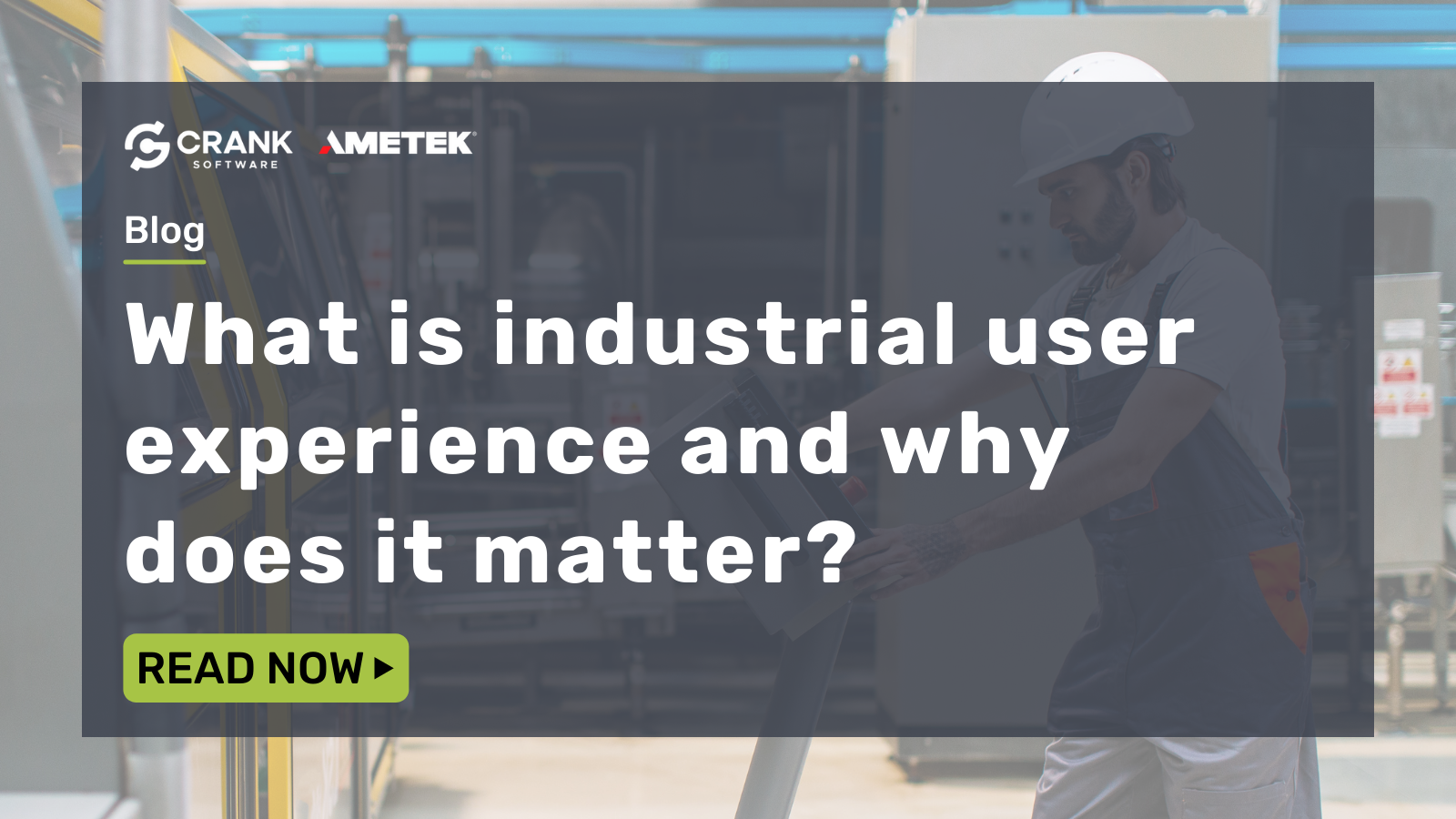Understand how user experience applies to industrial environments where safety and clarity are top priorities.
Assembly lines demand precision and time efficiency. Shipping and receiving operations must resolve innumerable complexities daily. Manufacturing floors and hospital wards must be safe and free from harm. These are just some of the many industrial applications that demand a no-nonsense user experience (UX) to ensure optimal and safe everyday performance. Such solutions need to be cost-effective, engaging to the eyes, anything but complicated, and focused on specific use cases while refined through real-world scenario testing.
Today, informed by the development of our own highly responsive industrial user experiences and client feedback, let’s further explore why the right UX for industrial environments is crucial.
The balancing act between UX and GUI development realities
Modern UX is, as the term implies, the experience a user has in utilizing a software’s set of features and supported input methods. It ties into the system’s GUI – the graphical user interface – as a clean and simple means of navigating the software. In that sense, the GUI has direct control over UX.
This is a fine line to tread as a developer as you don’t want to display too little in trying to fit into the hardware platform’s resources and therefore hamper context-sensitive operations. The right UX is one that not only has a streamlined and effective GUI but is itself reliable, snappy, and based on real-world use and the actual needs of employees (see our Ventec Life Systems case study as an example).
Safety and proactivity
Poorly designed or optimized UX in high-risk environments, such as when operating heavy machinery, can have dire consequences on employees and those around them. Unhandled touch inputs, performance slowdowns, jittery or unclear graphics, and other issues can seriously jeopardize safety and even put lives at risk in certain scenarios.
Safety should always take precedence before a creating a flashy industrial GUI design. If employers cannot implement a software solution that is responsive and straightforward to use in high-pressure environments, they risk far more than their bottom line. In addition, training employees to adapt to and correctly use the software – given a UX conducive to safety and efficiency – should be carried out. There shouldn’t be cumbersome steps or needless extra hoops for users to jump through in navigating, inputting commands, or otherwise.
Notifications and error alerts
Your UX should notify a user of any errors associated with the connected equipment. This ties into not only safety but also general awareness, helping them maintain operational efficiency in a more informed manner. Should a serious risk be present – such as lifting machinery going over the intended weight limit – then an alarm or other unmistakable means of urgent notification should activate. In the case of multiple urgent alerts, they should be filtered so users aren’t overwhelmed or unsure of which to focus on immediately.
Of course, this should also apply to error codes and lesser notifications, such as when an employee isn’t lining up a fabric under a press correctly. A smarter UX is exactly that, intelligent in how it informs users of anything that requires their attention, rather than distracting and confusing them with multiple alerts at the same time.
Today and tomorrow’s industrial user experience
Your user experience should be fluid and informative without overcomplicating any established processes — but what about tomorrow’s needs or next month’s operational tweaks to align with new compliances or innovations? That UX needs to be prepared to adapt and evolve, which is why thorough testing, reusable GUI assets, and a well-defined architecture are essential. This gives industrial GUI developers the headroom needed to implement and use new software features while also having a solution that can flex and scale with growth or to accommodate changing needs. It’s also a great way to keep redevelopment cycle timeframes and costs under control.
There’s never been a better time to implement a groundbreaking UX in any industrial environment, but is the foundation sufficiently solid? Build it right, from the get-go, with a focus on safety, user-friendliness, information management, and a GUI that streamlines the entire industrial experience for users.
To learn more about designing and developing effective industrial user experiences, watch this webinar with Crank Software and NXP Semiconductors:
.png?width=180&height=67&name=Crank-AMETEK-HZ-Rev%20(4).png)


